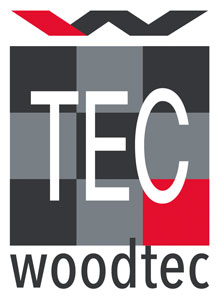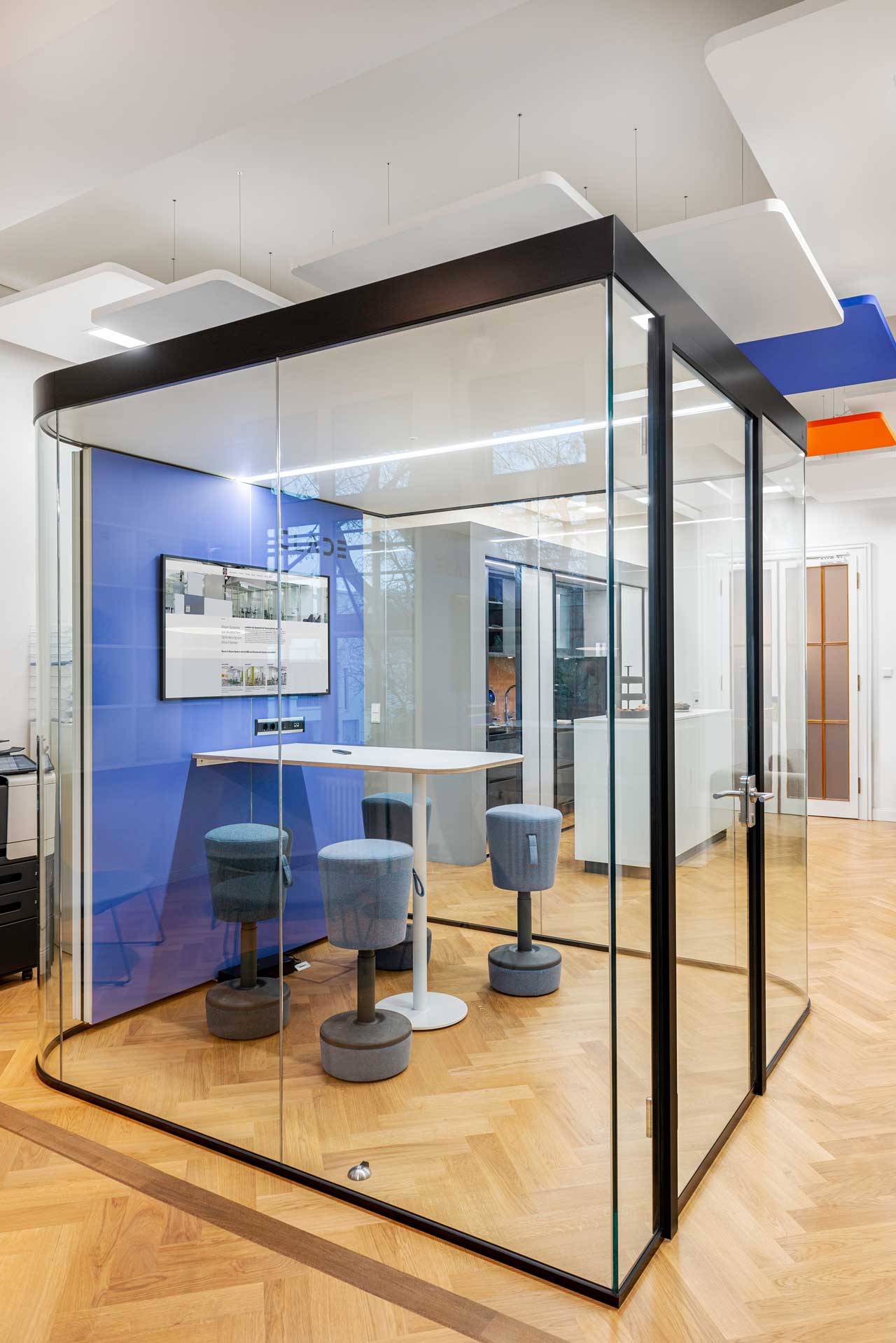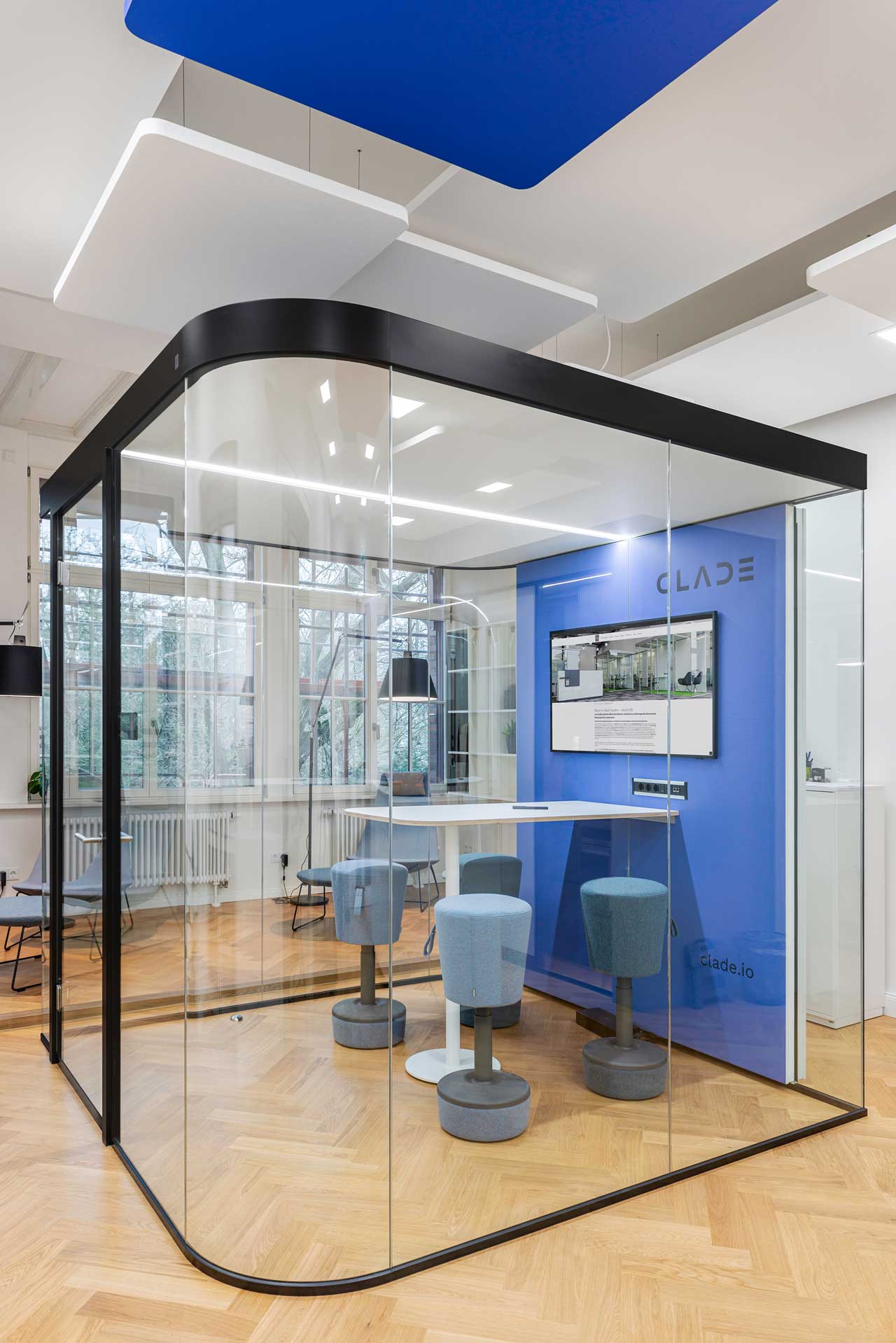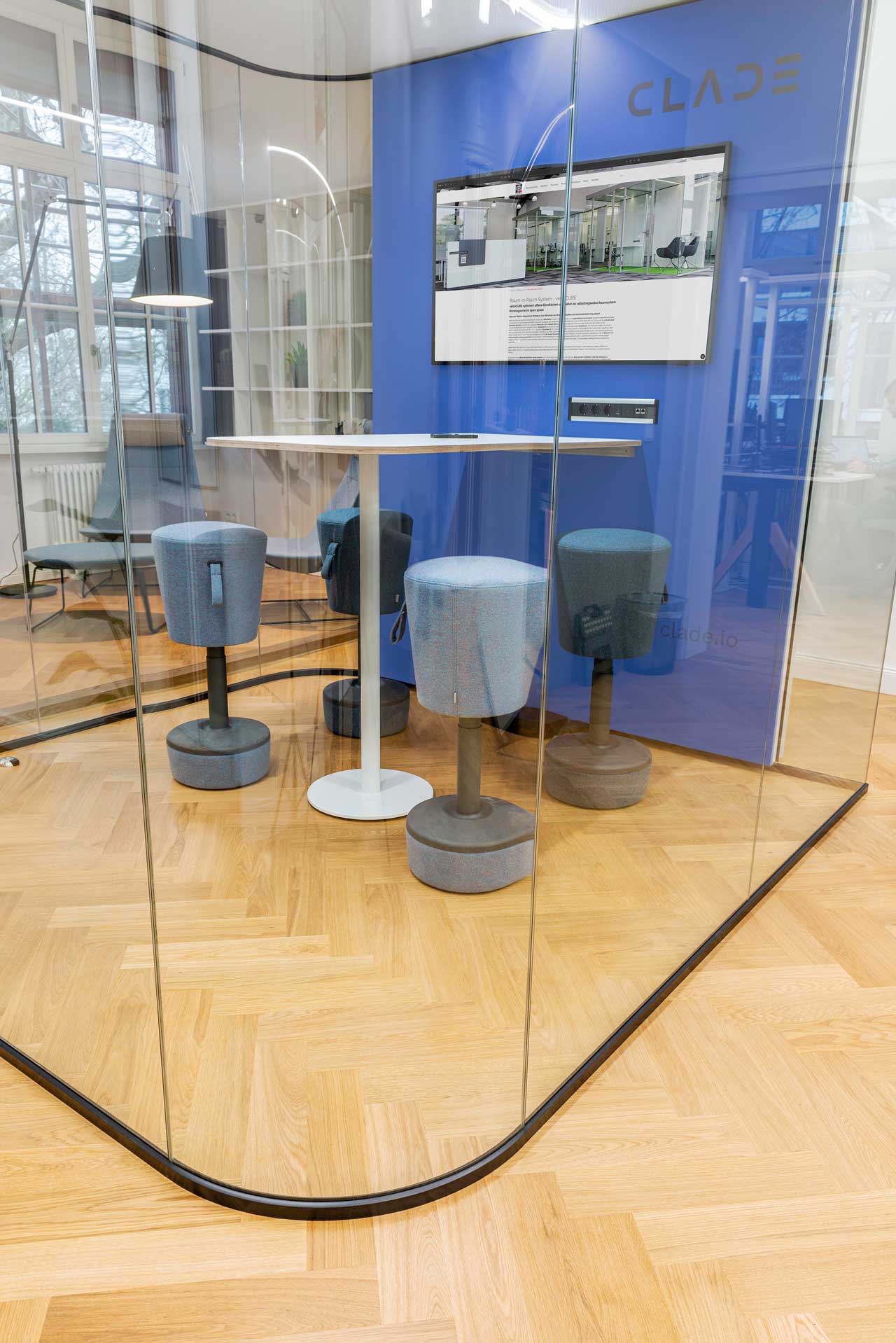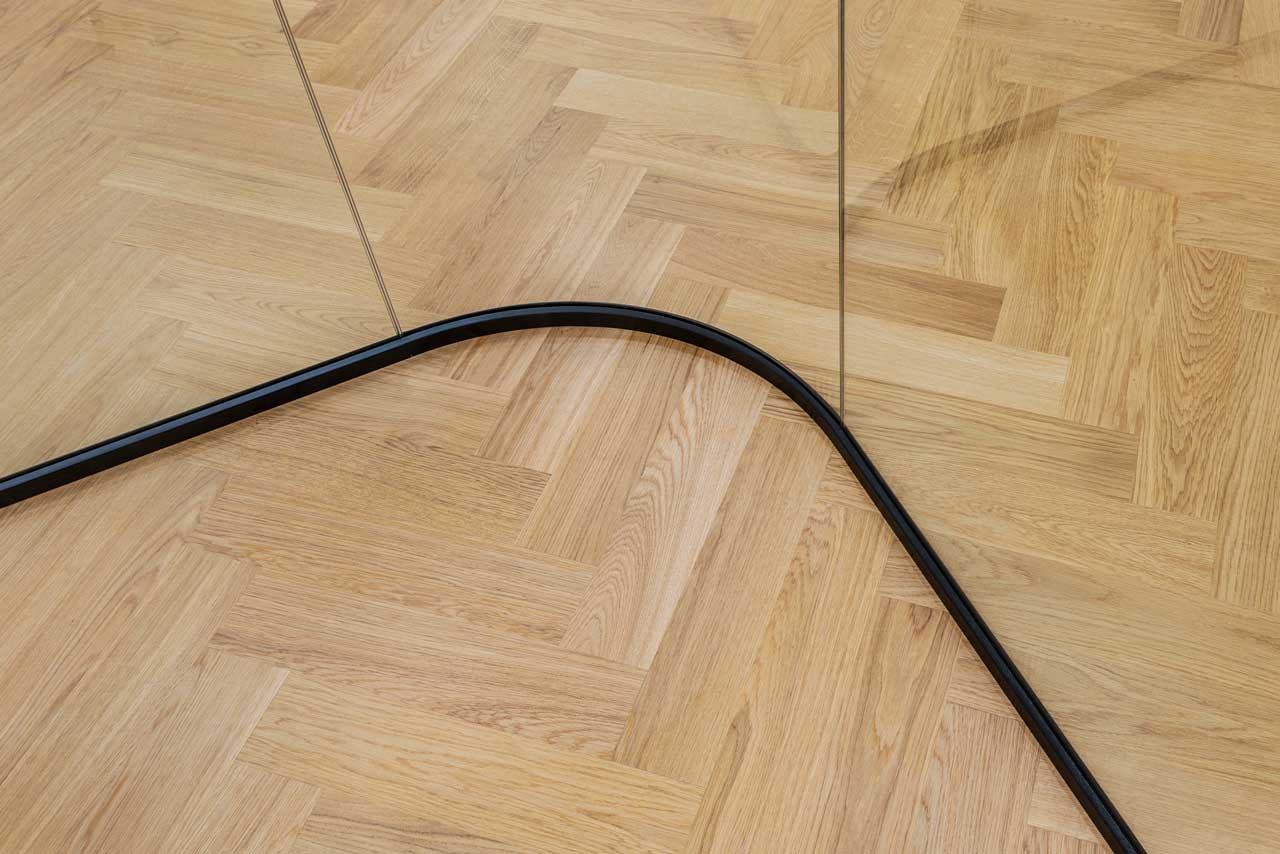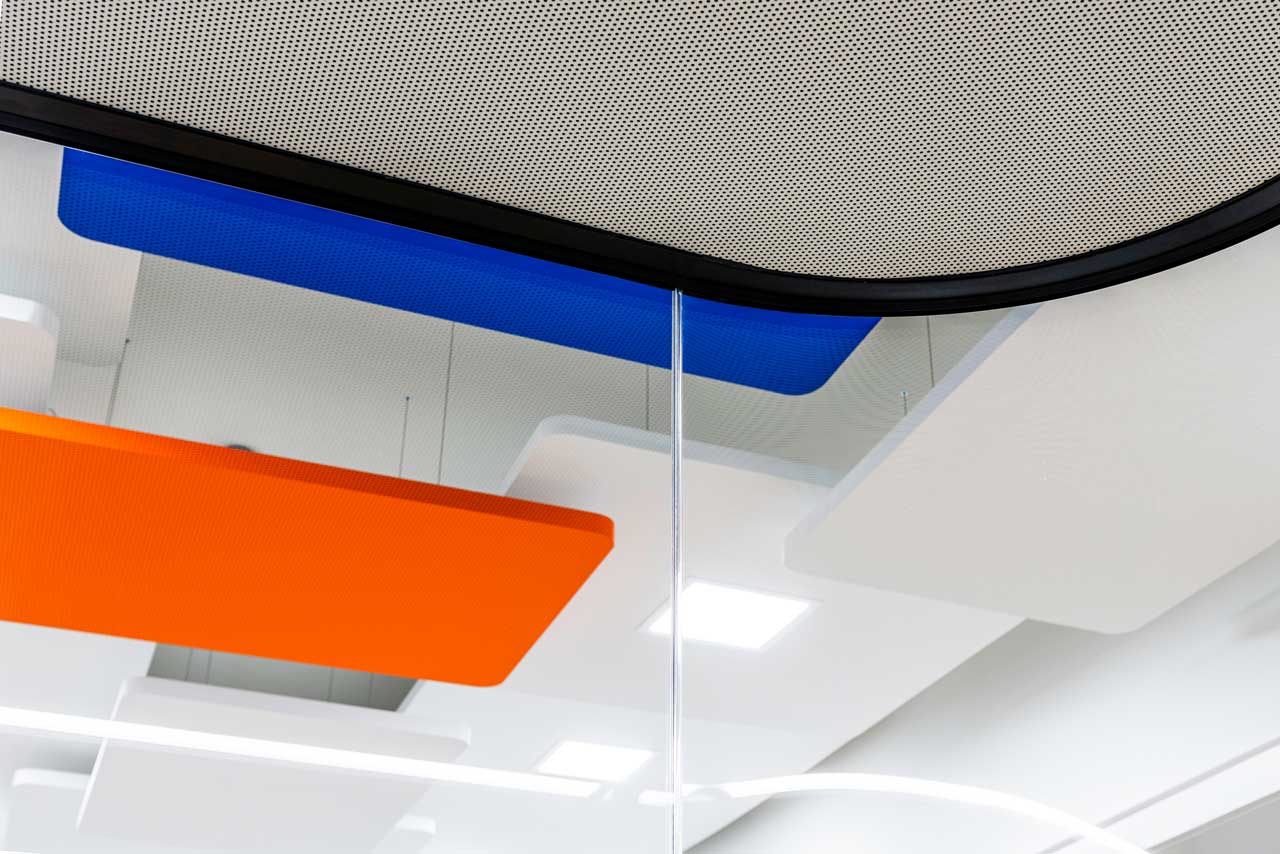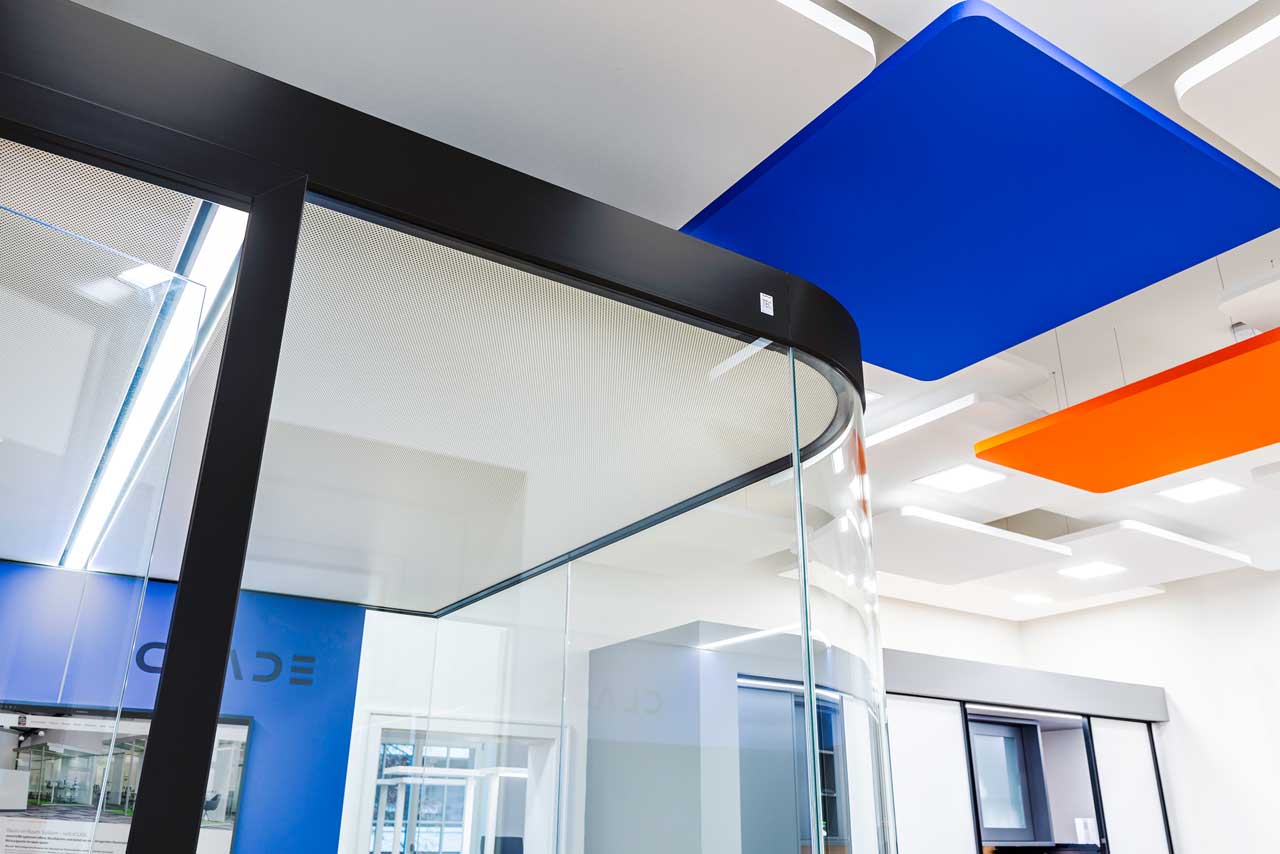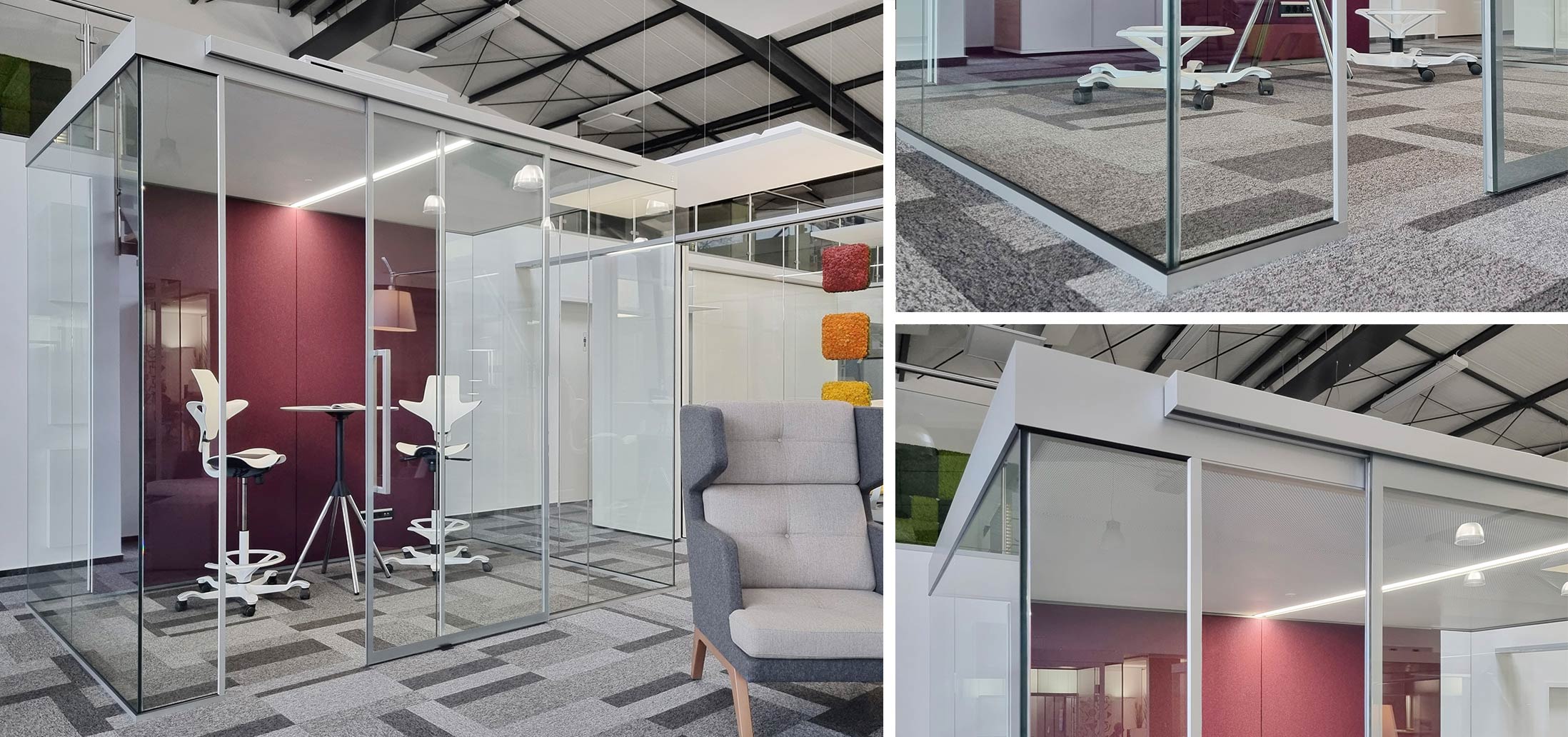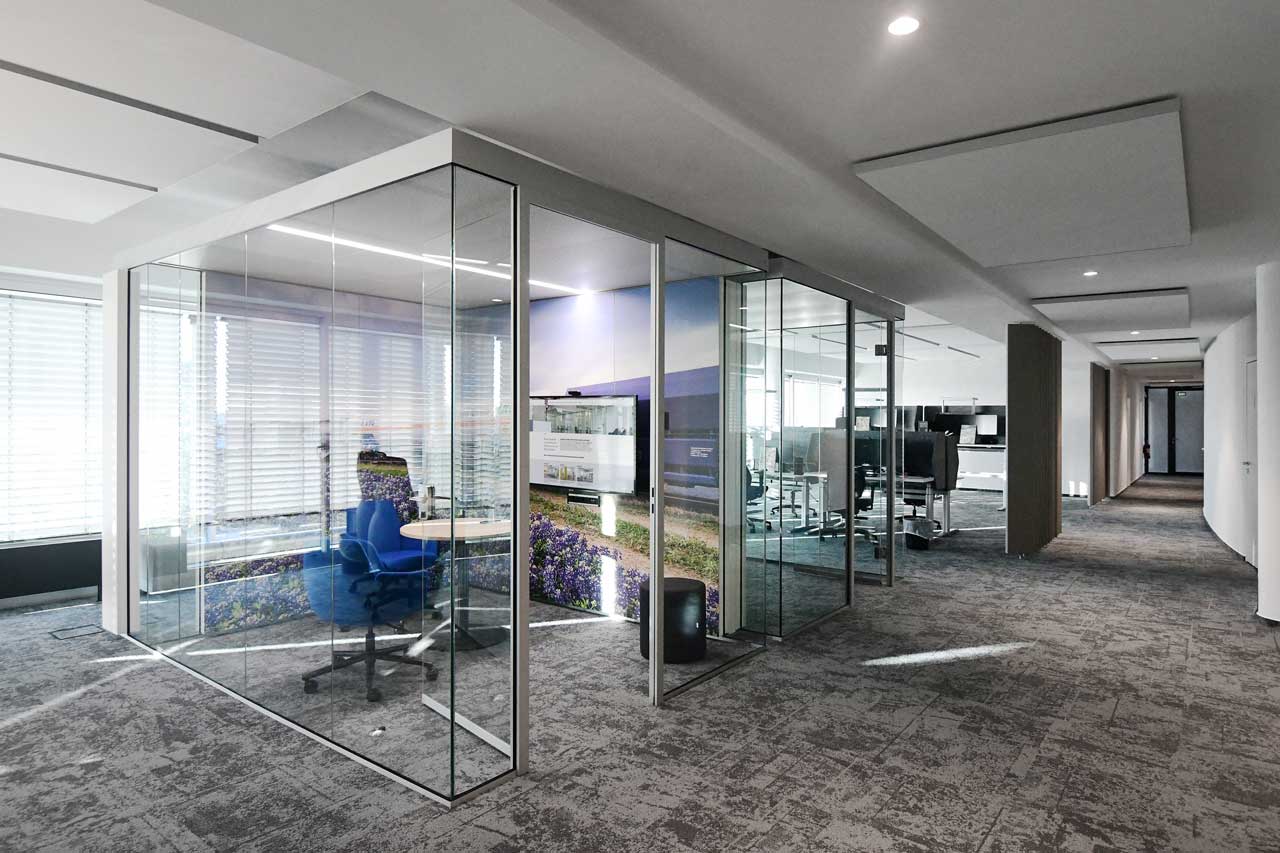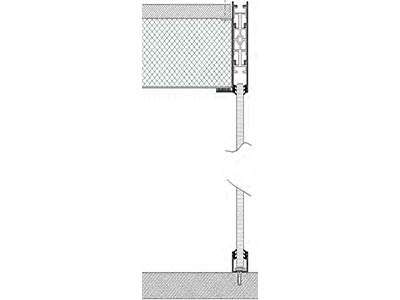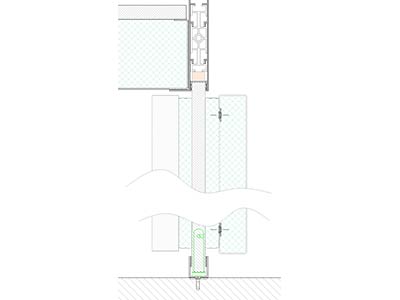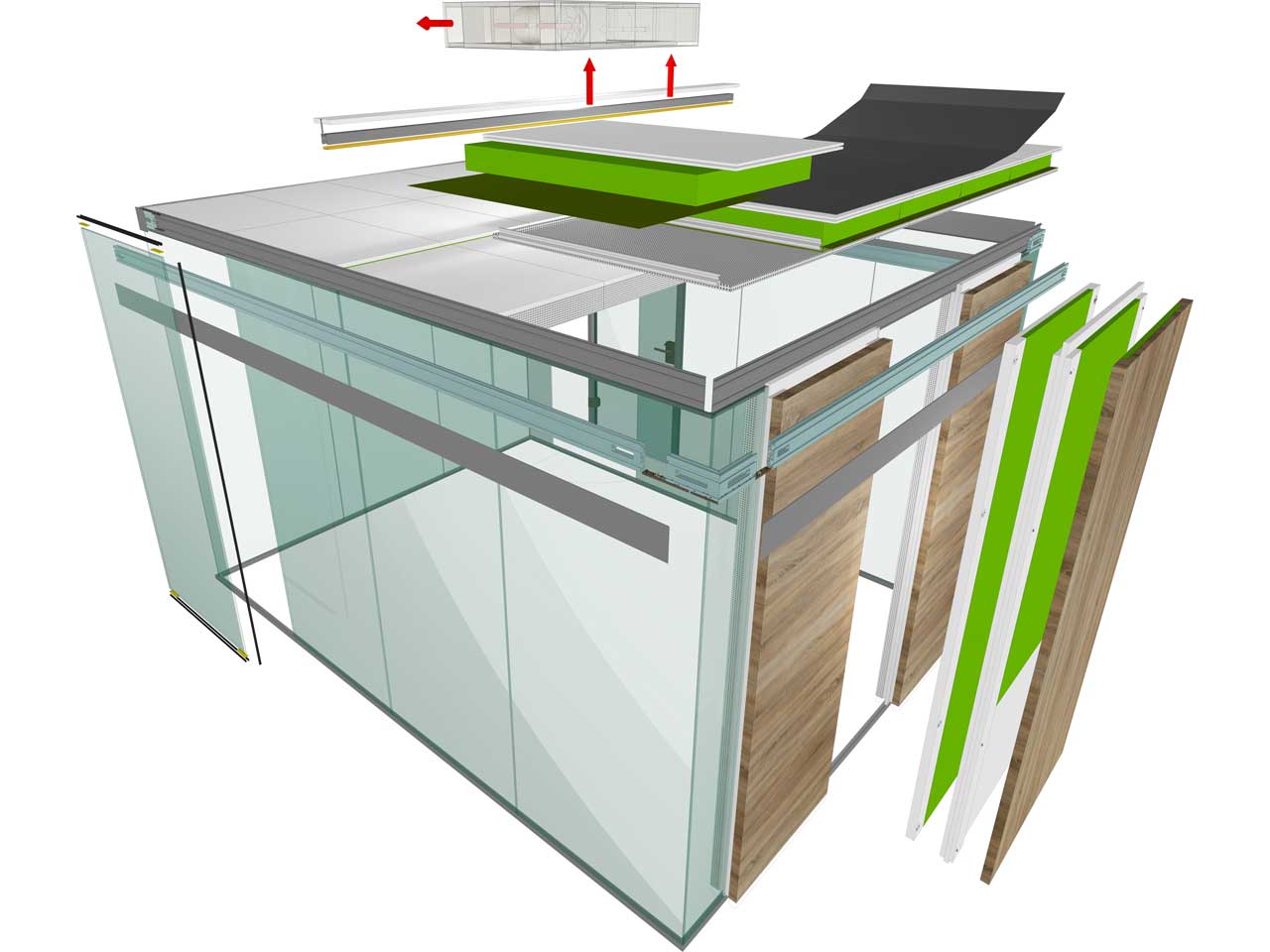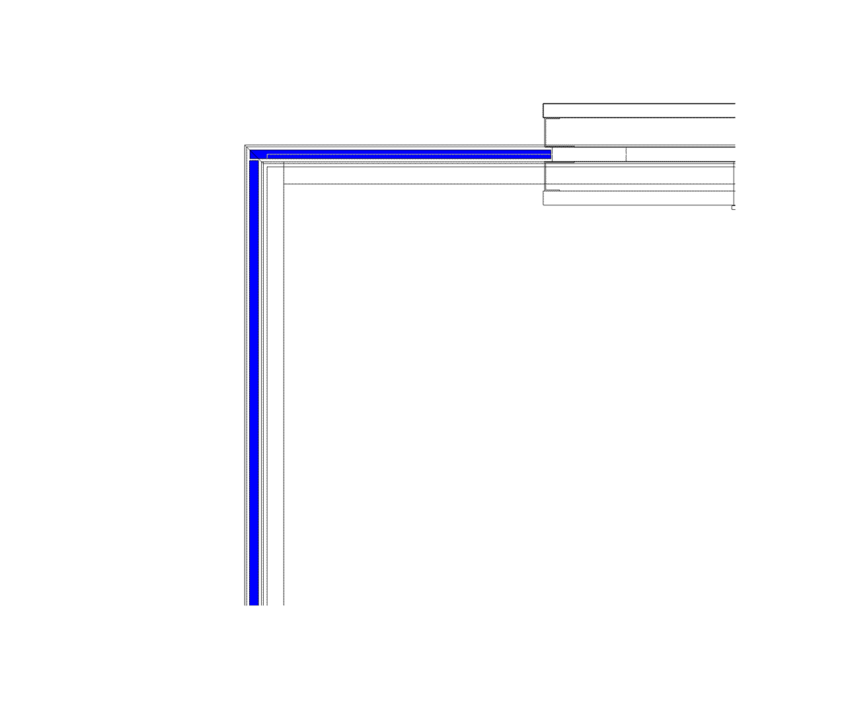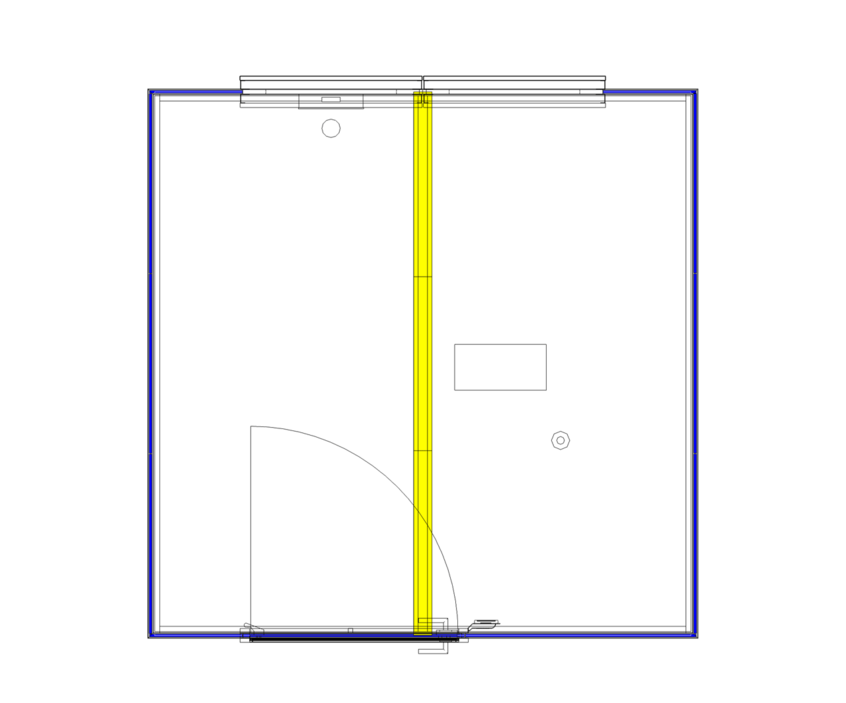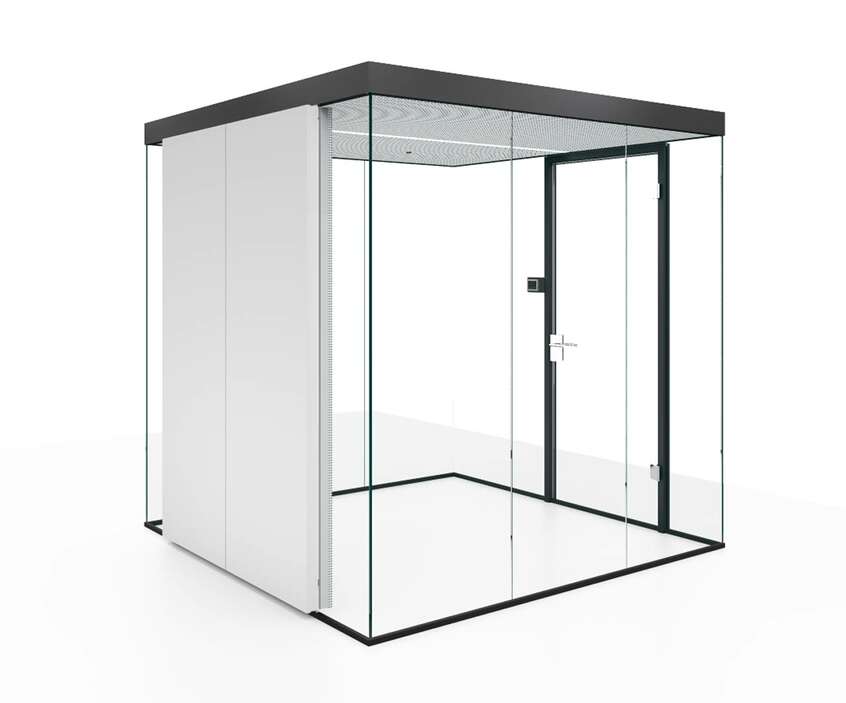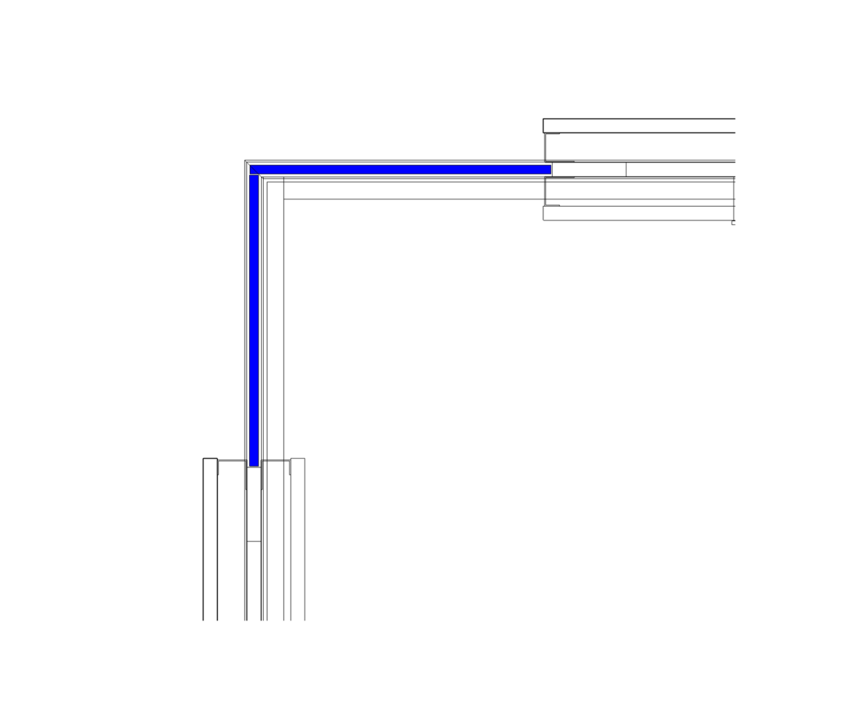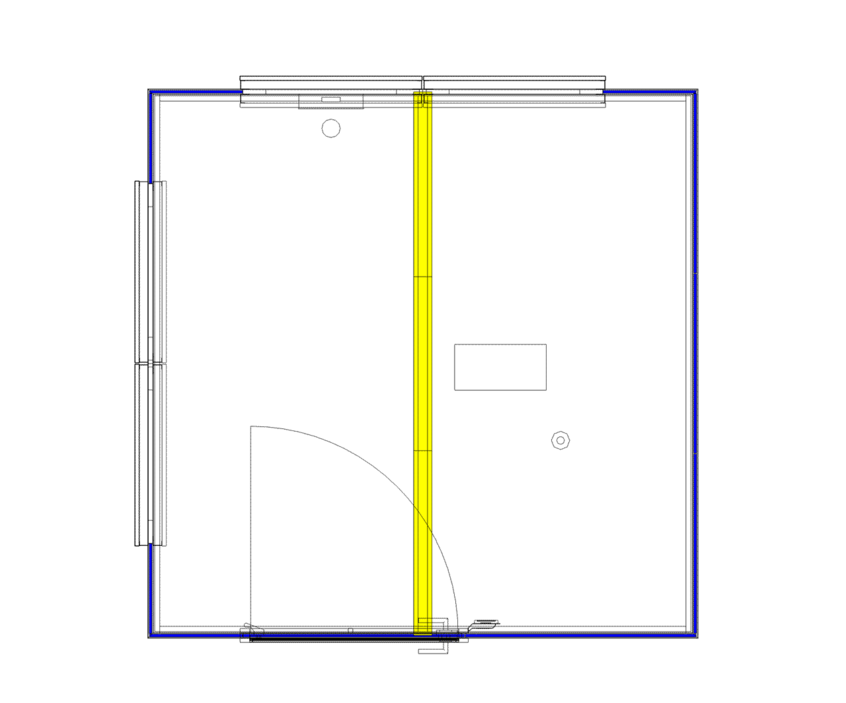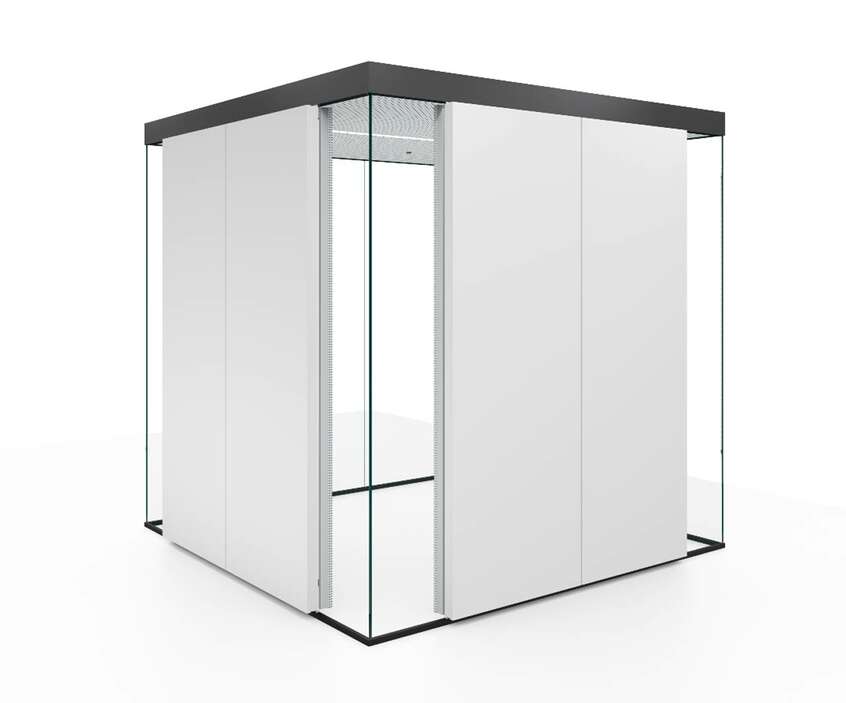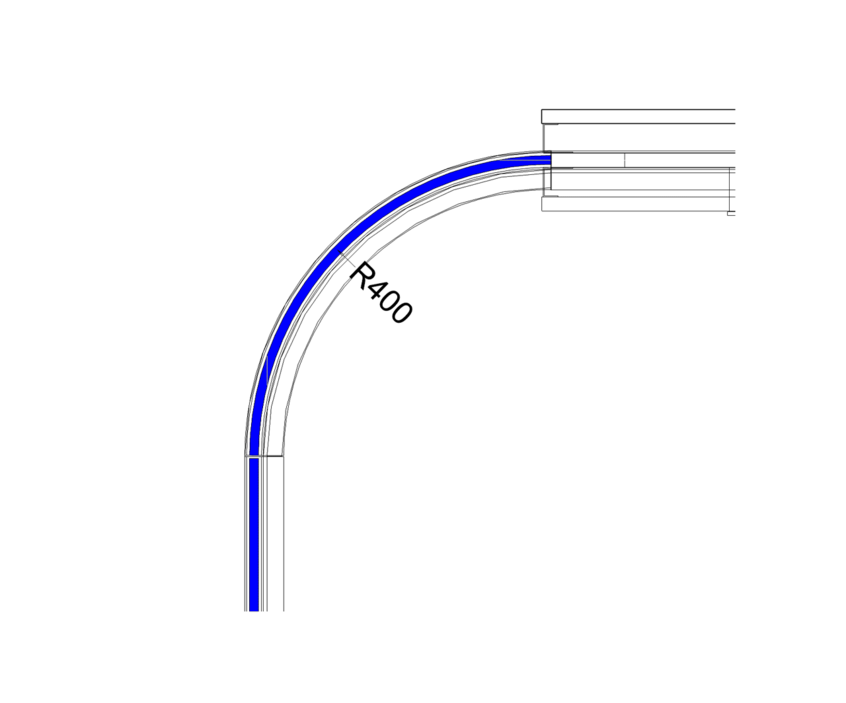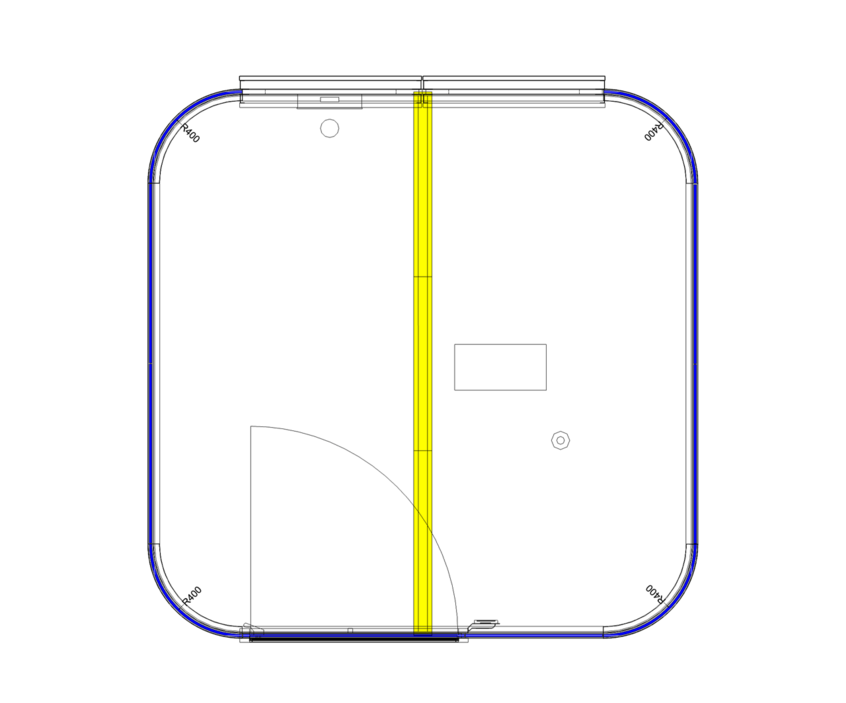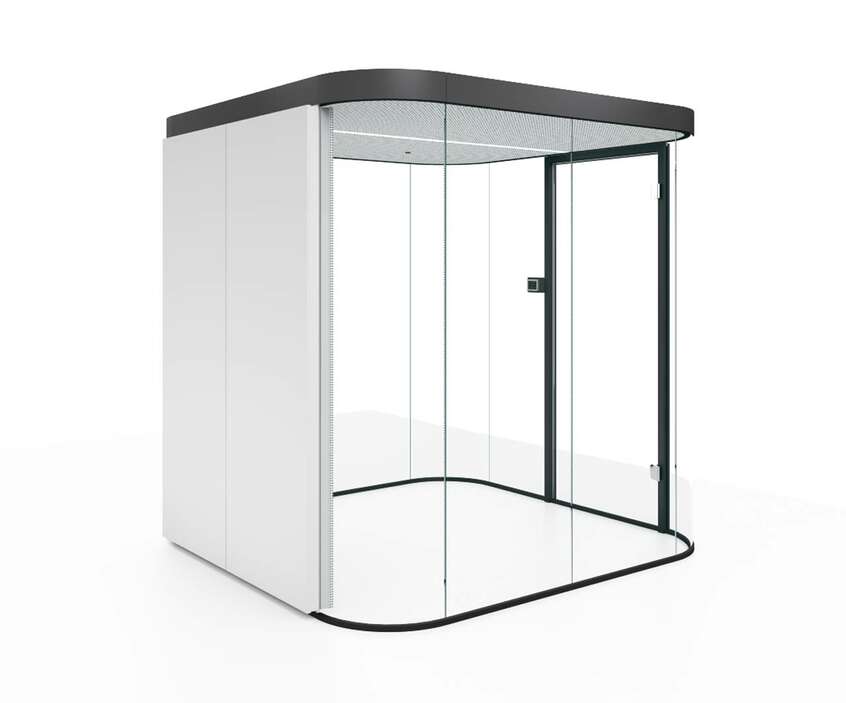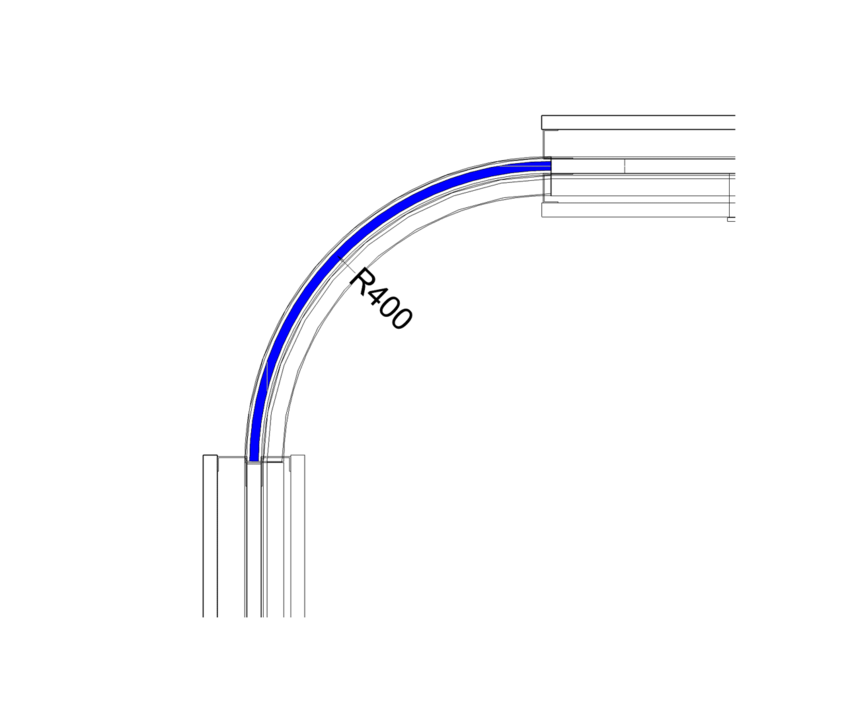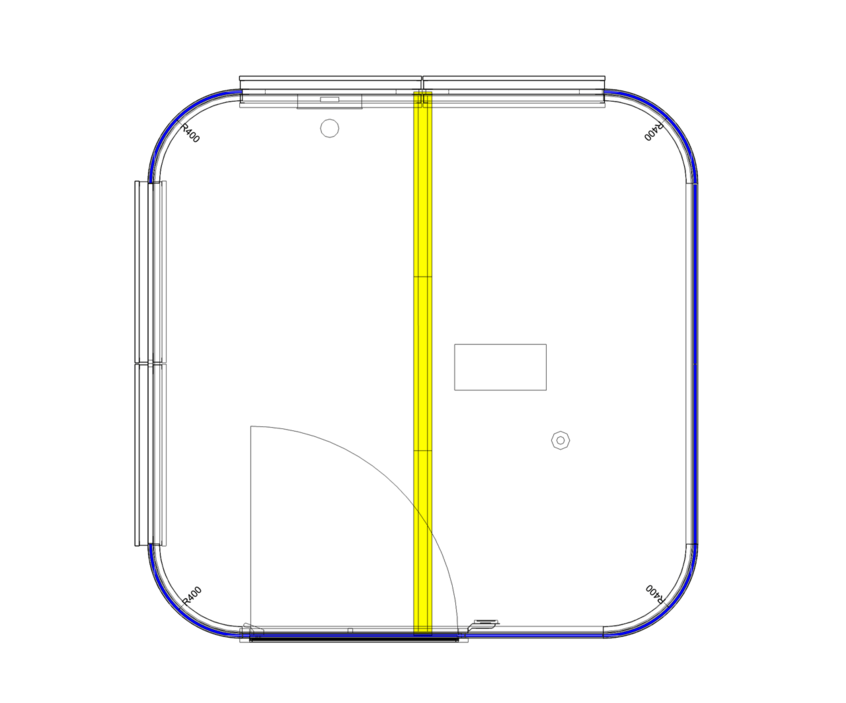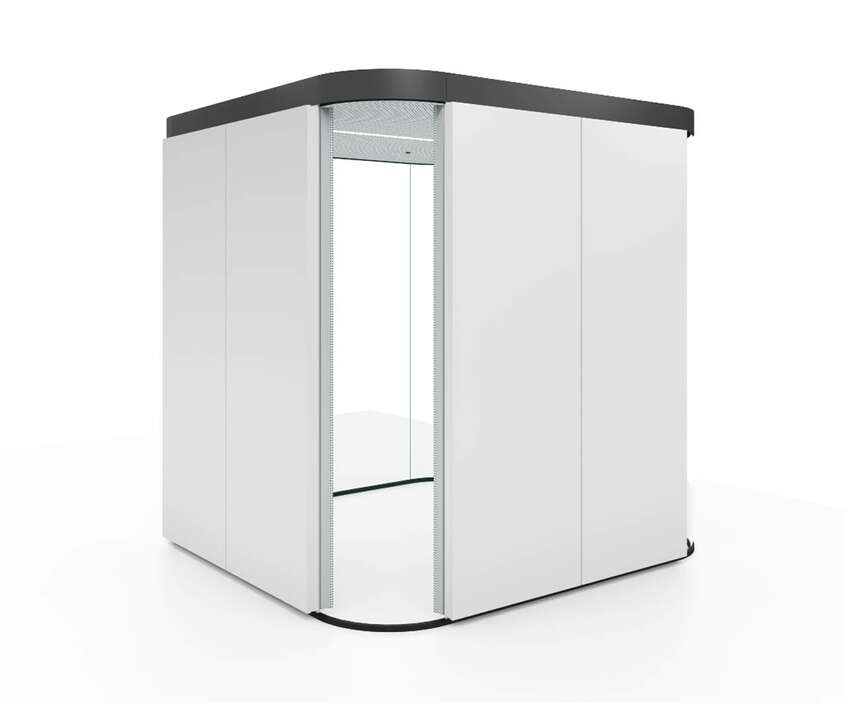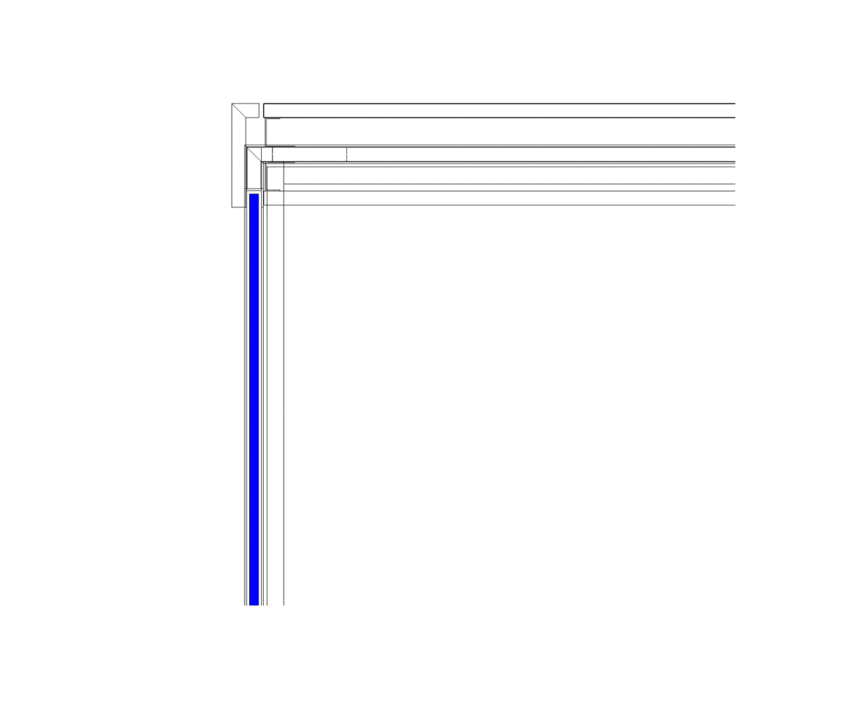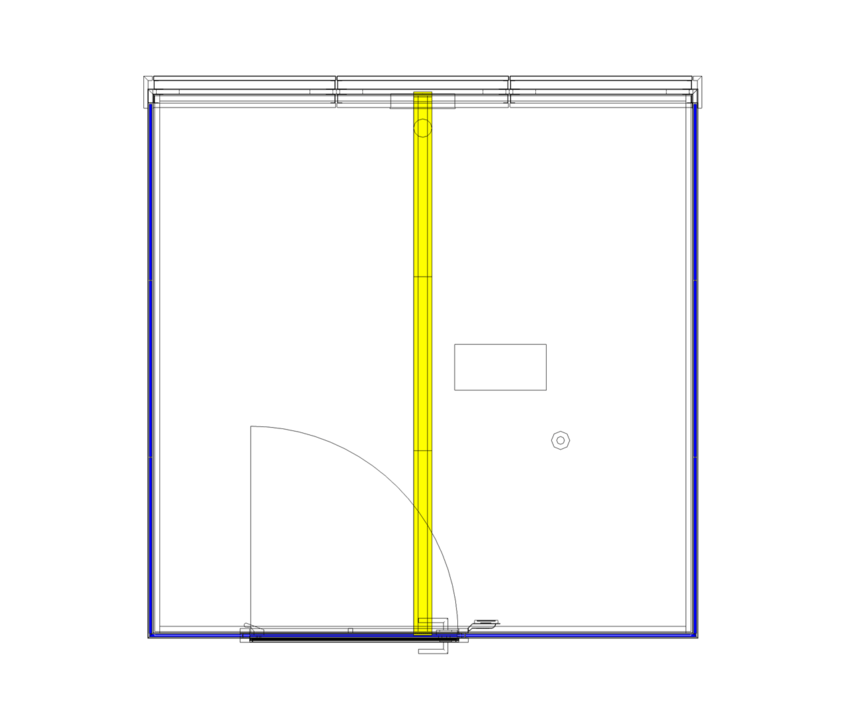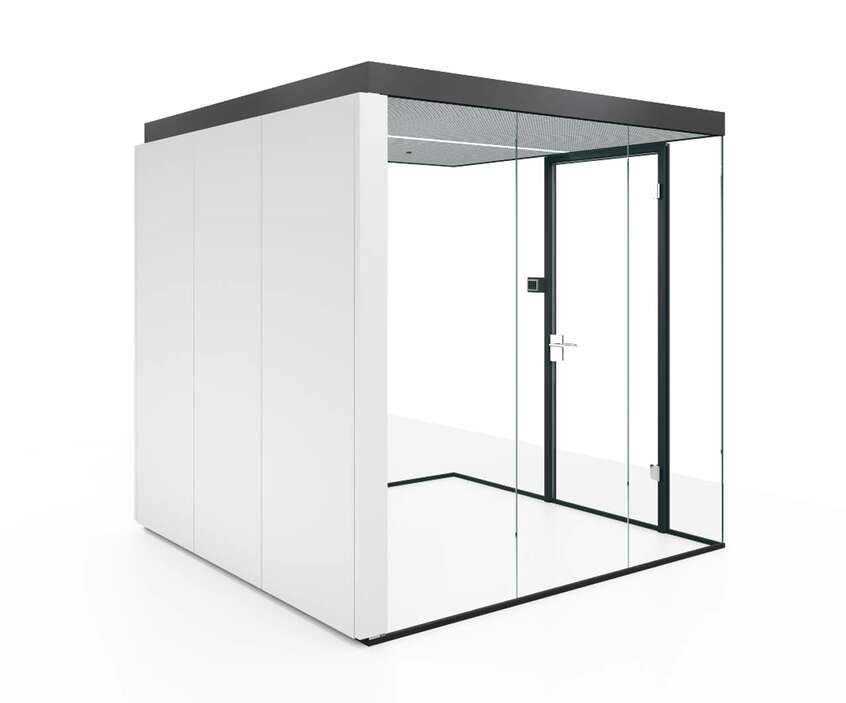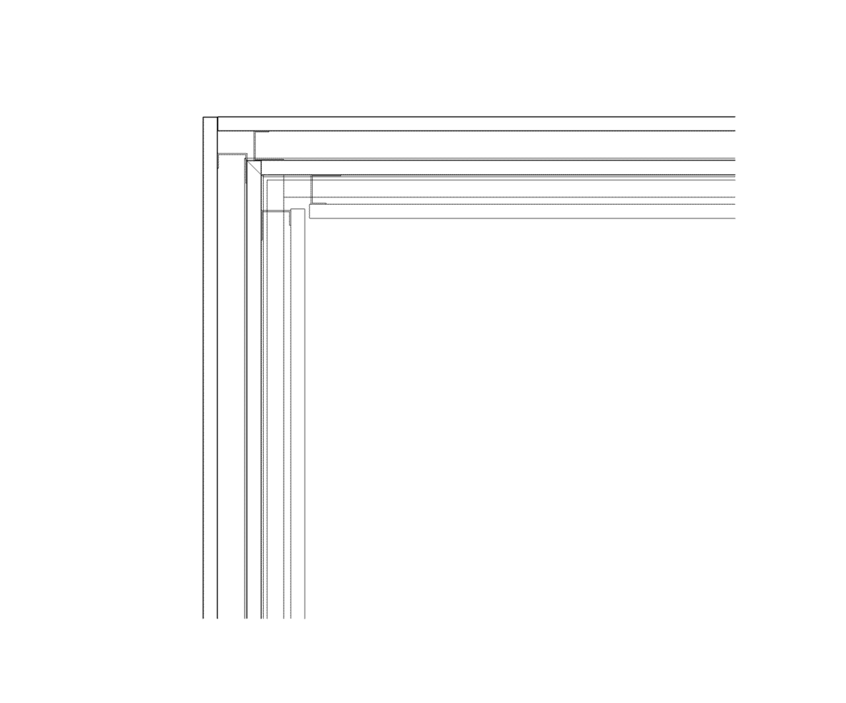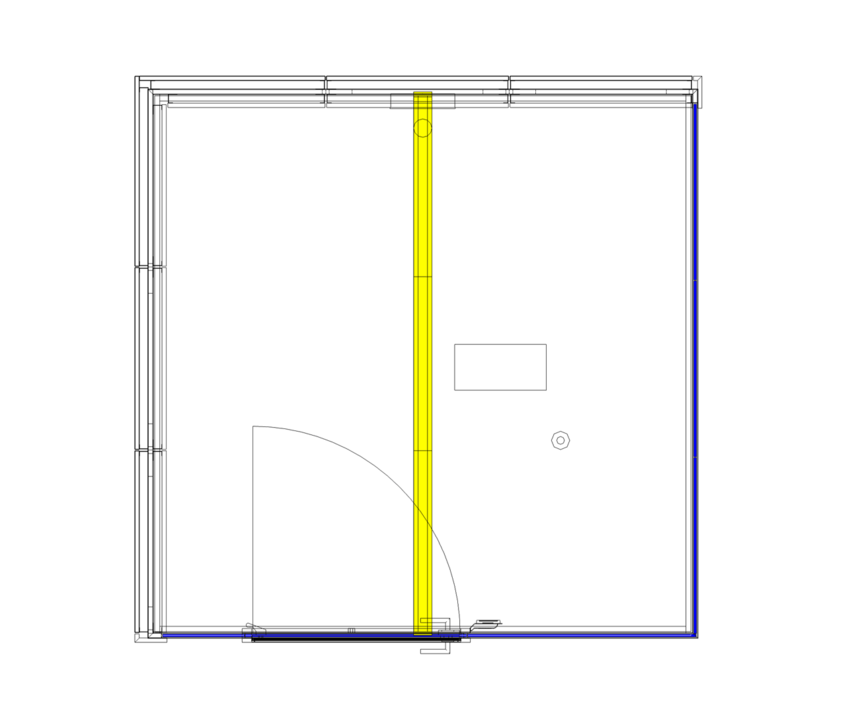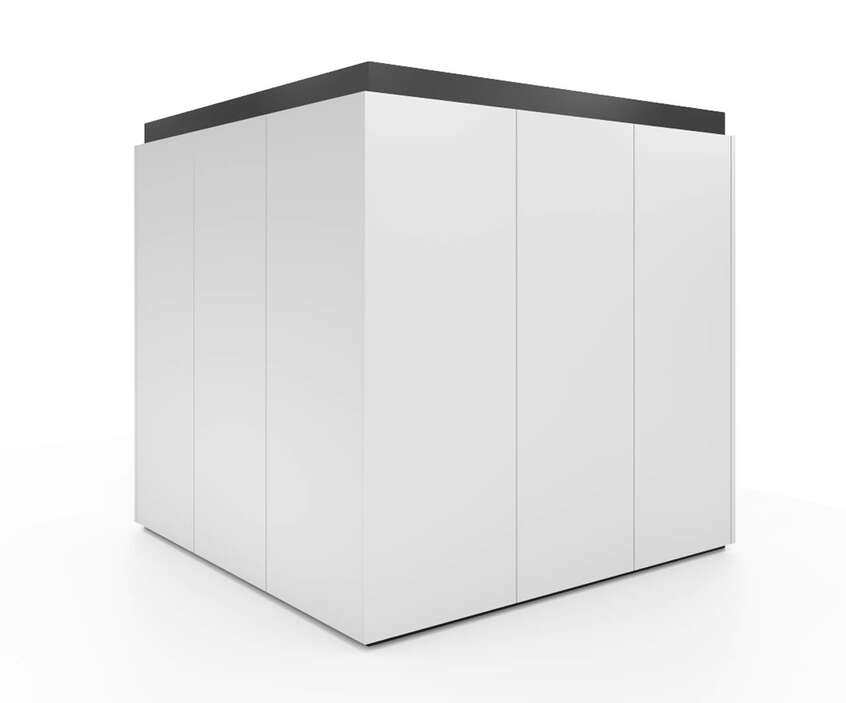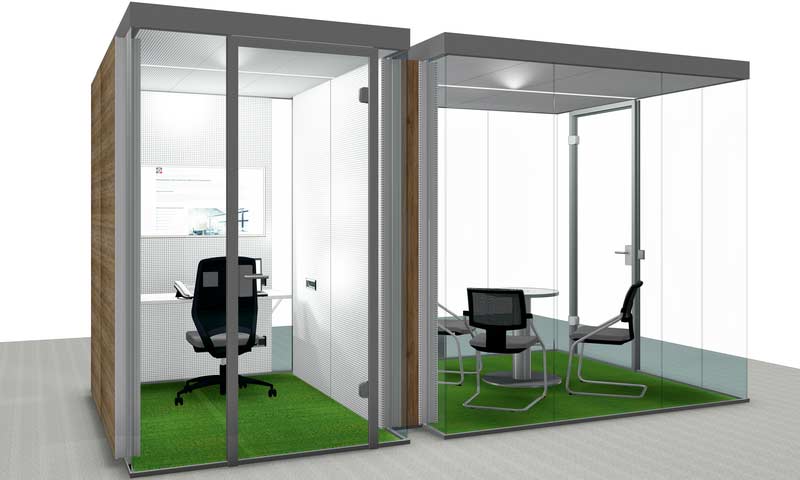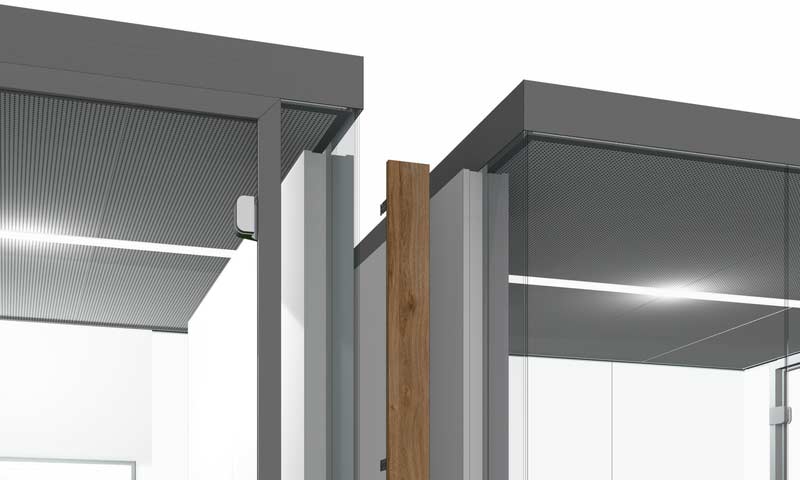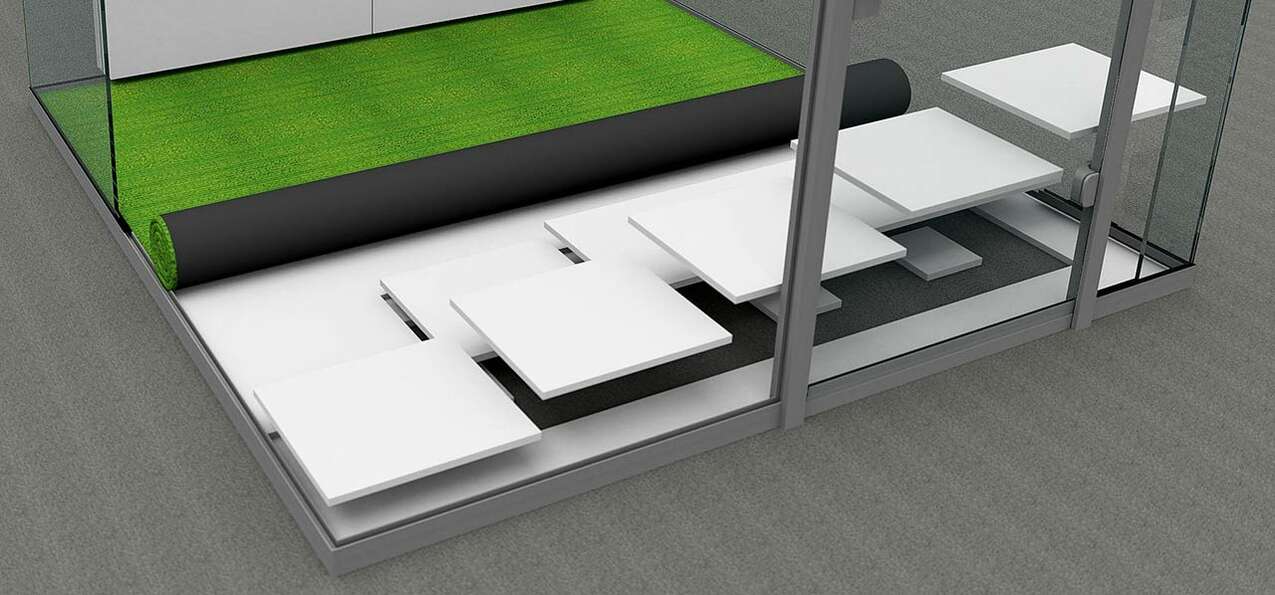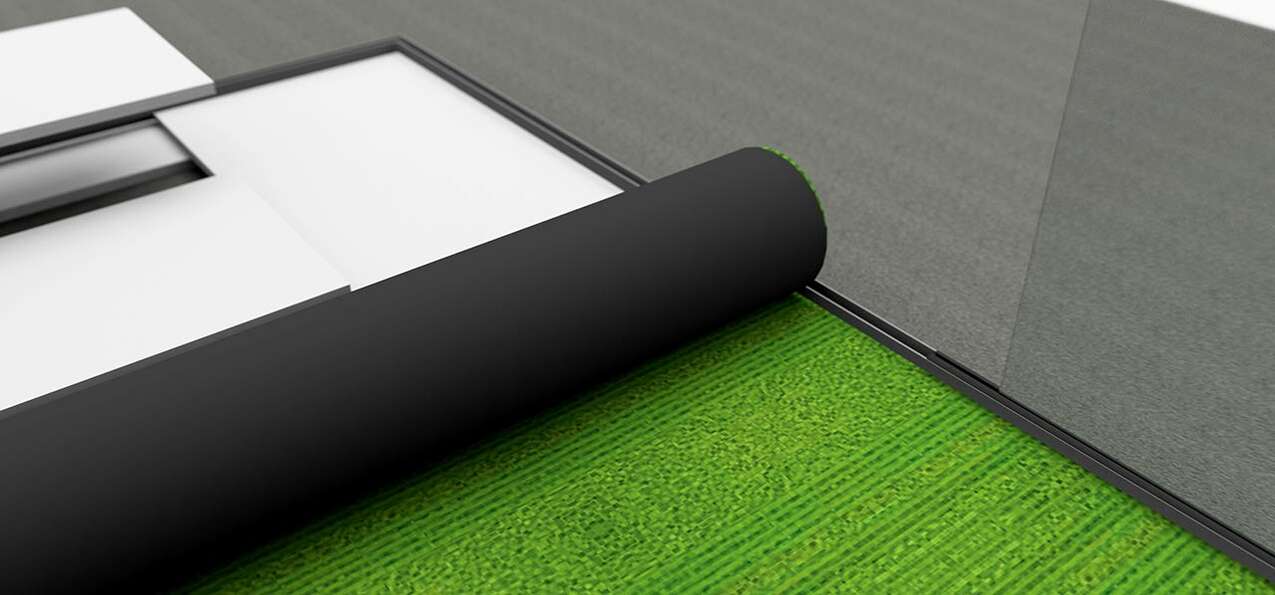
Flexible modular system for room-in-room units of any size and design
The room-in-room construction vetroCUBE enables the construction of closed, soundproof rooms independent of the building structure. The construction is free-standing, self-supporting, self-ventilating and therefore self-sufficient in the building. The system has a modular design. Room-in-room units can be relocated, added to or modified at any time.
Access to the room-in-room system is at ground level
A plinth ring and a ceiling ring, as well as load-bearing walls, form the flexible framework of the room-in-room construction. A highly sound-absorbing and sound-insulating system ceiling closes the room-in-room cell at the top. The room-in-room construction is bolted directly to the floor. vetroCUBE does not need its own floor slab. This means that access is at ground level and barrier-free.
Hinged doors
Doors in room-in-room constructions are preferably hinged doors. These ensure optimum sound insulation on an economical basis. The all-glass doors are framed in aluminum frames. The door leaf is 12 mm thick and is guided on two high-quality stainless steel hinges. The handle set is a stainless steel fitting. The lock is prepared for a profile cylinder provided by the customer so that the room-in-room units can be integrated into a locking system provided by the customer. We supply and fit a dummy cylinder as a placeholder. The frames and door leaves are designed to be ceiling-high.
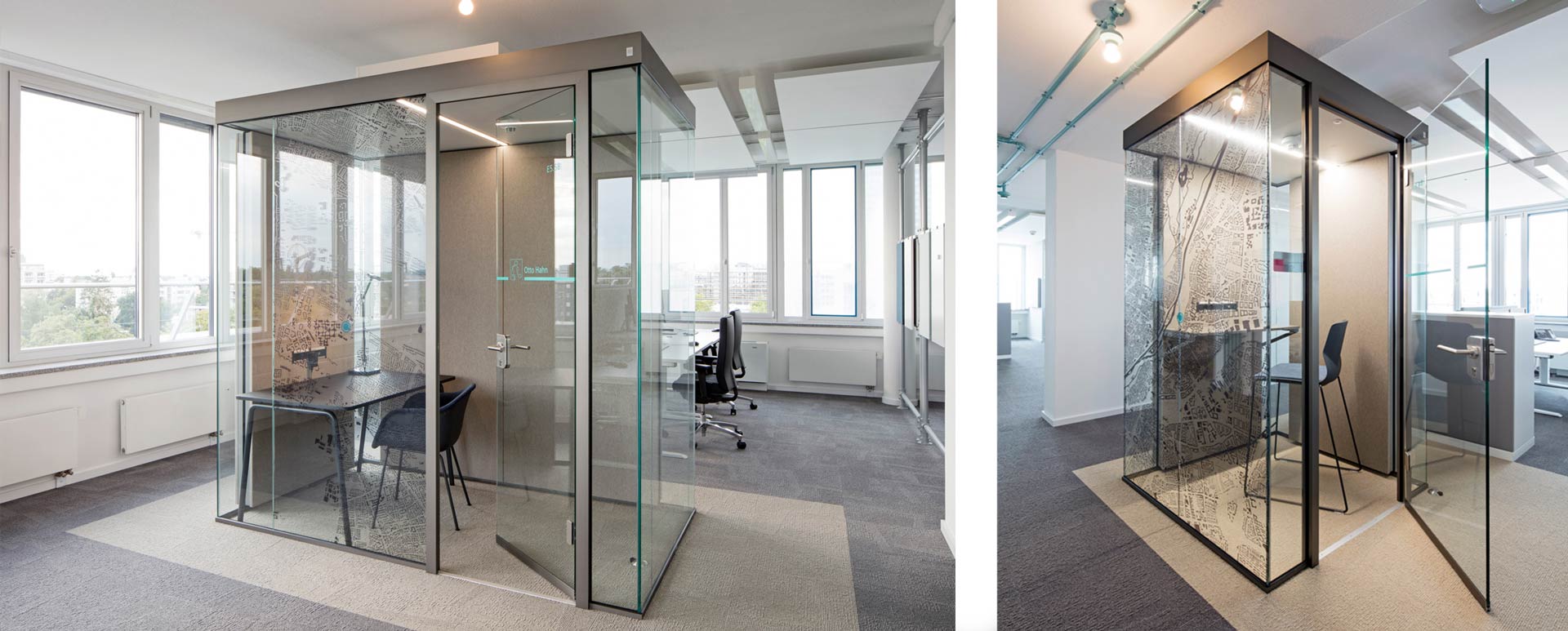
Sliding doors
The soundproof sliding door is still very new in the range. A circumferential, intelligent sealing system detects when the door is open and seals it tightly when closed. The sound insulation comes very close to that of the hinged door. With the soundproof sliding door for the vetroCUBE room-in-room construction, we offer a real problem solver, even for very tight situations. Finally, the functional area of the hinged door must be taken into account in the planning. Doors that open inwards require larger room-in-room units. Doors that open outwards must be coordinated with escape and rescue routes.
vetroCUBE, self-supporting and independent
- Barrier-free
- Maintenance-free
- Modular system
- Room-in-room principle self-supporting and self-sufficient
- Multifunctional solid walls thanks to sandwich construction
- All-glass surfaces with maximum transparency
- Glass / glass corners
- Glass rotundas
- Solid wall / glass corners
- Solid wall corners
- Glazing 12 mm 37 dB
- Glazing 16 mm 40 dB
room-in-room wall units
The solid walls of the room-in-room system are sandwich constructions. Depending on requirements, they are covered inside and outside with corresponding functional surfaces. We offer decorative elements, whiteboard elements or high-performance absorbers. The surfaces can be covered with textiles. The glass elements of the room-in-room construction are 12 mm or 16 mm laminated safety glass panes. They consist of a composite of two 6 or 8 mm thick panes, which are bonded together to form a single pane using a transparent Phonostop film. This provides high sound insulation on the one hand and the desired security on the other.
Corner design options
In addition to the quality of the wall elements, the design of the corners has a significant influence on the design of the room-in-room constructions. At woodtec, we favor the "glass-glass corner" or the "glass rotunda". This design feature is decisive for the light and unobtrusive architecture of the vetroCUBE. The high degree of transparency enables the planning of very small rooms and still gives the user a generous impression of space. We are having increasing success with architects and planners with this, and yet there are always situations that require "solid wall corners" or even "glass solid wall corners". The following drawings illustrate the possible variants. Please note at this point that each corner can be designed separately. So you could actually realize all 4 variants in one vetroCUBE and that can actually make sense. Imagine a vetroCUBE that stands in front of a wall on one side and is to have two solid walls in an L configuration. You would use the "solid wall corner" and the "solid wall glass corner" in front of the wall. On the free side, the "glass-glass corner" and perhaps, for traffic or design reasons, a "glass rotunda".
Glass rotunda:
The curved glass elements are a particularly elegant form of "corner connection". The solution requires the curved laminated safety glass pane but also the corresponding profile lengths in curved form. Sure, it's more expensive, but it's affordable. The solution makes perfect sense for particularly exposed corners.
Solid wall to glass corner:
Now there are certainly situations that require the corners to be solid. The room may stand on two sides in front of walls of the building structure. However, the remaining sides are to be glazed. In this case, you would choose this corner connection, or simply because you like this detail better.
Solid wall corner:
Let's stay with the case described previously. One corner of your vetroCUBE would then have to be designed as a solid wall corner. However, you may also want to exclude the above-mentioned visual connections and visually shield the retreat area. Then combine the last two corner solutions.
room-in-room system in connection:
In the event that two or more room-in-room constructions are to be linked together, it is necessary to pay particular attention to sound insulation from room to room. The certified sound insulation of 37 or 40 dB can probably be achieved using a simple middle wall. While these values are a very good value in the direction of a "lively" open space, this would not be sufficient sound insulation from one "quiet room" to the other "quiet room". It is precisely for this reason that we place two structurally independent room-in-room units next to each other and only link them visually. In this way, we ensure very good acoustic decoupling of the systems and therefore absolute confidentiality between the rooms. In addition to the acoustic advantage, the user retains flexibility. He can move the rooms separately at any time. Conversely, the user also has the option of combining the rooms, i.e. creating a larger room from the two individual cubes. All he has to do is purchase the appropriate fitting elements for the ceiling and wall.
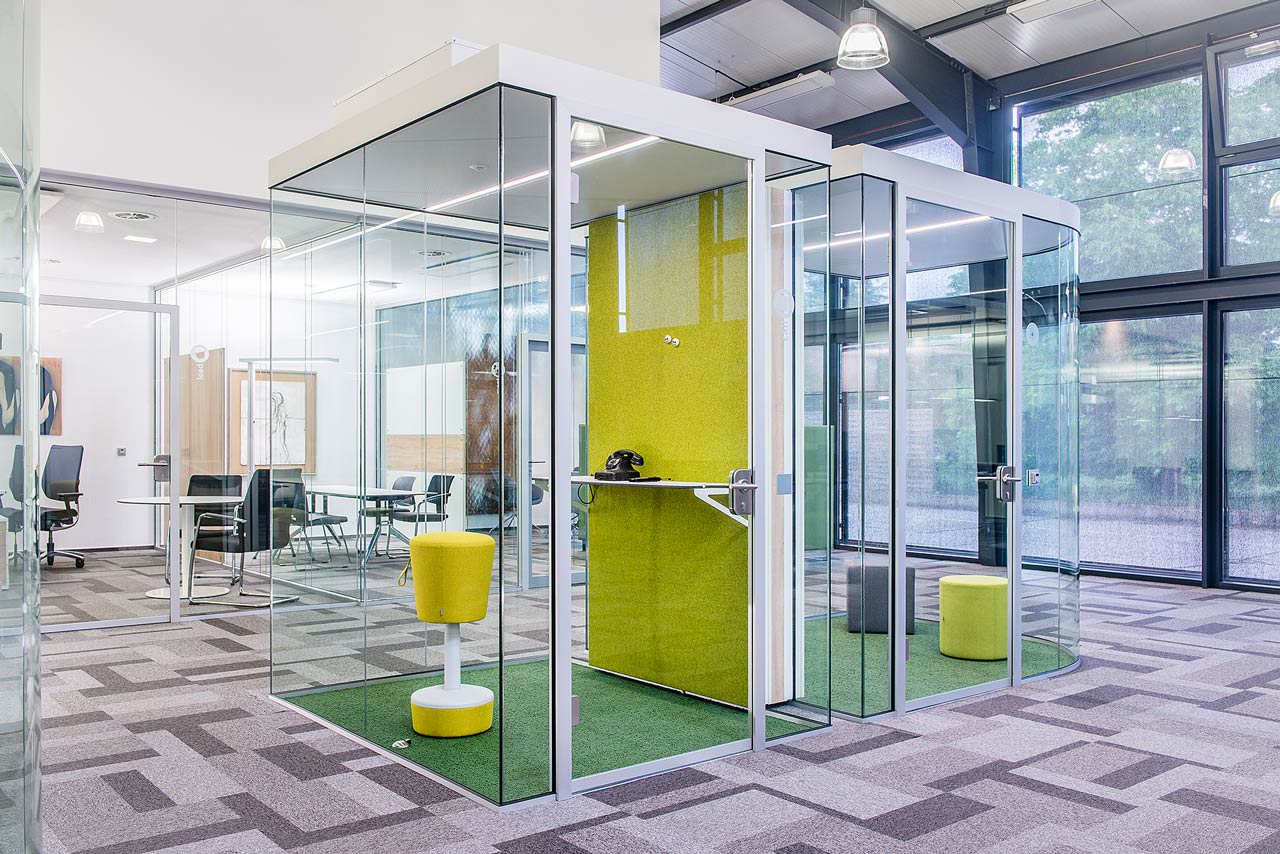
Accessibility and OPTION base plate
Every now and then we receive a request to assemble room-in-room constructions WITHOUT any attachment to the structure, i.e. H. even without drilling holes in the ground. On the one hand, we would like to point out at this point that direct attachment to the floor enables a ground-level entrance and thus ensures accessibility. On the other hand, it is simply common for spatial structures to have to be attached to the ground, so this requirement usually goes hand in hand with special locations. Often it is high-quality stone floors, for example in a lobby, that need to be protected. The landlord's demands and the associated dismantling costs are rarely the reason for this request. In order to be able to react to this situation, we offer a system floor for the vetroCUBE. The construction of the vetroCUBE is built on this composite floor in the usual way, so that it then forms a self-contained unit. The screws are screwed into the system base and this provides sufficient support for all other components. The floor also offers cavities for feeding the electrification into the wall elements. As is always the case, this solution also has a disadvantage. A 50 mm high threshold is created for the user in the entrance area. The advantage is that the floor inside the vetroCUBE can be designed as desired.
